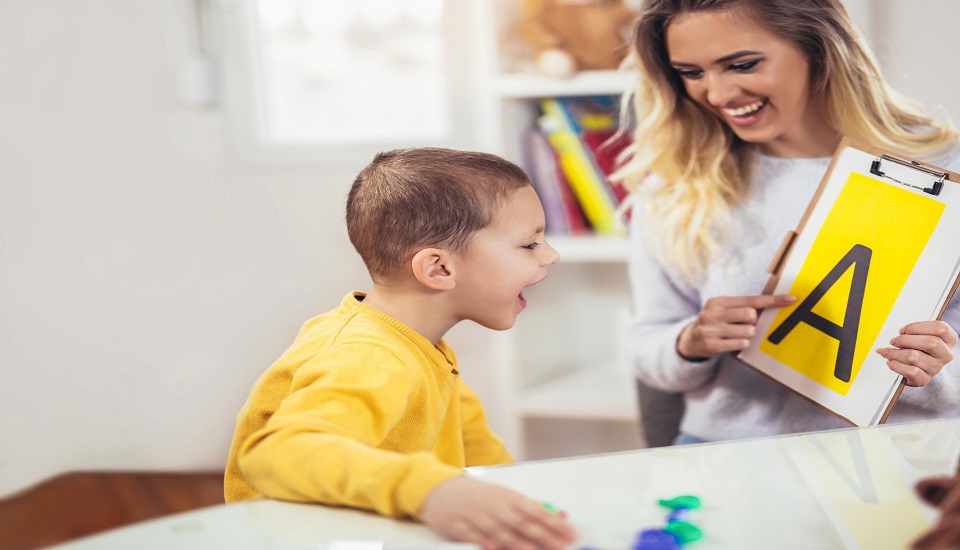How To Handle And Teach Uncommon Or Rarest Learning Disabilities Students In Your Classroom?
17th February 2023
There are all sorts of different types of learning disabilities students may suffer from. Some students may suffer from Dyslexia, while others may have ADHD. However, there are some students who suffer from a less common & rarest learning disorder.
These students often have a hard time getting the help they need because their disorders are not as well-known or understood. As a result, they can often feel lost and alone in the classroom.
According to weforum.org, 1 out of 20 children globally suffers from a learning disability.
An SEN Teacher has the important job of not only identifying these students with specific learning disabilities (SLD) but also working to provide them with the resources and support they need to succeed.
Note: If you’re an aspiring SEN teacher or an experienced teacher who wants to upgrade their teaching skills and understand those children with special needs then we do recommend our Special Education courses, which definitely help you to achieve your teaching goals.
Keep reading further to get an overview of some of the rarest learning disorders students may suffer from and offers tips on how to best support these students in the classroom.
What is an uncommon or rarest learning disorder?
An uncommon or rarest learning disorder is a type of disorder that is not as widely known or as well understood as more common learning disorders such as dyslexia or ADHD. These disorders can range from sensory-based learning disabilities, such as hypersensitivity to noise and touch, to broader cognitive impairments that can affect the way a student interacts with the world and processes information.
For example, a student with a learning disorder might have difficulties with concentration, organization, or problem-solving, or may have trouble speaking a foreign language. Regardless of the type of disorder, all uncommon learning disorders have an impact on a student’s ability to learn in the classroom.
These disorders are often just as disabling as more common learning disabilities, but they are not as often identified or understood. As a result, they can be much harder to identify and provide support to students.
The different types of uncommon or rarest learning disorders:
There is a broad range of uncommon learning disorders students may suffer from. Some of the more common disorders include dyspraxia, dyscalculia, nonverbal learning disabilities, and auditory processing disorder.
Not only are these disorders less common than more traditional learning disabilities, but they can also be much harder to diagnose, as they can manifest in different ways in different students.
1. Dyspraxia is a motor-skill disorder that affects a person’s ability to plan, initiate, and execute physical movements. Children with dyspraxia often have trouble sequencing movements, using fine motor skills, and processing and organizing information.
2. Dyscalculia is a disorder that affects the ability of a student to understand and use mathematical concepts. Common symptoms include difficulty with basic calculations, a lack of understanding of mathematical symbols, and trouble interpreting graphs and charts.
3. Nonverbal learning disabilities involve difficulty interpreting nonverbal cues, such as body language, facial expressions, and gestures. Children and adults with nonverbal learning disabilities may also have difficulty solving visual-spatial problems and interpreting spatial relationships, such as direction and distance.
4. Auditory processing disorder, or APD, is a neurological disorder that affects the ability to process sounds and interpret them accurately. Children and adults with APD may have difficulty understanding instructions, following conversations, and recognizing environmental sounds.
How to handle the rarest learning disabilities students in the classroom?
As an SEN Teacher, it is important to recognize when a student is dealing with an uncommon or rarest learning disorder. Early identification and appropriate interventions can help students succeed and make the most of their educational experiences. It is important to remember that every student is different and so is every learning disorder.
It is important to get to know the student and learn about their particular disability so that you can provide the best support possible for the student. You should also make sure to create a safe and supportive atmosphere in the classroom.
Encourage open communication and provide a platform for students to share their feelings and experiences. It is also important to be sympathetic and understanding and to create a space where any weaknesses do not hold the student back from learning.
In addition, make sure to involve parents or guardians in the process as well. They can provide valuable insight into the child’s needs and can help you devise a personalized plan to help the student succeed.
How to teach the rarest learning disabilities students?
When it comes to teaching students with specific learning disabilities (SLD) or rarest learning disabilities students, it is important to tailor your approach to the individual. Every student is different and therefore his or her learning needs and experiences may be different too.
First, get to know the student and their particular disability. This will help to create an environment where the student can learn and relate to the material. Depending on the disorder, it might be necessary to break down the material into smaller, more manageable chunks or to provide a visual aid for the student to help them understand the concepts.
Second, keep the classroom material relevant and interesting to the student. This can help to keep the student engaged and motivated to learn. If necessary, provide extra activities or materials to help the student better understand the concepts.
Lastly, make sure to provide reinforcement and praise when the student makes progress. Encourage the student to take ownership of their learning and recognize that they are capable of succeeding.
Things to keep in mind when teaching rarest learning disabilities students:
When teaching a student with a rarest or specific learning disorder(SLD), it is important to keep a few key things in mind.
- It is important to remember that every student is different. Approach each student as an individual and tailor your teaching style to their unique needs and experiences.
- Teach the student to recognize and accept their disorder. Help the student to recognize their strengths, understand their limitations, and focus on what they can achieve.
- Provide a safe and supportive environment and make sure to give the student the opportunity to express themselves and receive feedback without fear of judgment.
- Focus on the student’s strengths. Choose activities that will focus on a student’s strengths and help them acquire new skills. be patient and understanding. Recognize that the learning process may take longer with a student with an uncommon disorder, and provide reinforcement and encouragement throughout the process.
To wrap things up
It is important to recognize that uncommon or rarest learning disorders can have a profound impact on a student’s ability to learn in the classroom. As an SEN Teacher, it is important to identify these students and provide appropriate interventions that are tailored to the individual’s needs.
It is important to create an environment that is safe and supportive, to focus on the student’s strengths, and to provide reinforcement and encouragement. By doing so, teachers can ensure that all of their students, no matter their learning abilities, have the opportunity to learn and succeed.
In case, if you want to understand the need of specific or rarest learning disability students more better then we recommend you to go through our Special Education courses which will definitely help you.
Written By: Abhishek
Leave a Reply
Recent Posts
- Make Language Learning Fun 5 FunFilling ESL Activities For Teachers To Implement In ESL Classroom
- The Role Of Teachers As Counselors In Eradicating Students Fears
- Achieving Financial Stability For Special Need Parents
- Make Teaching English To Beginners Fun And Engaging With Our 5 Effective Tips
- Achieve A Healthy WorkLife Balance As A Teacher With This Alternative
- Foster A Growth Mindset In Your School Students Teachers And Staff With Proven Strategies


